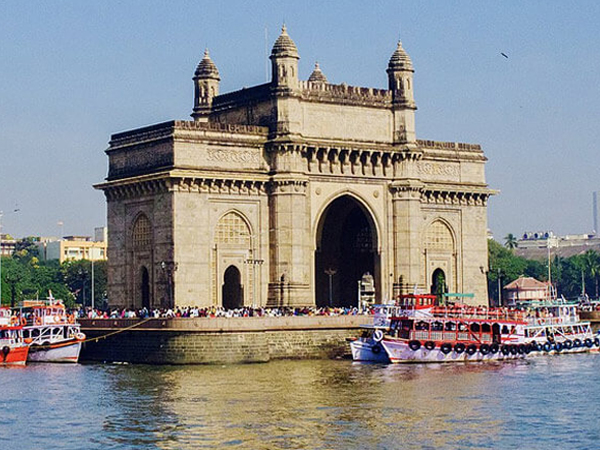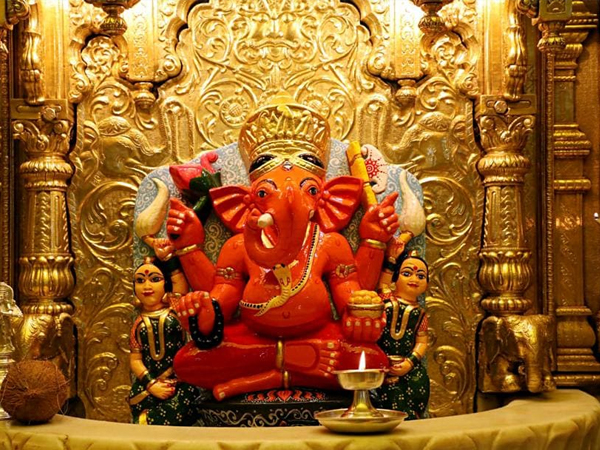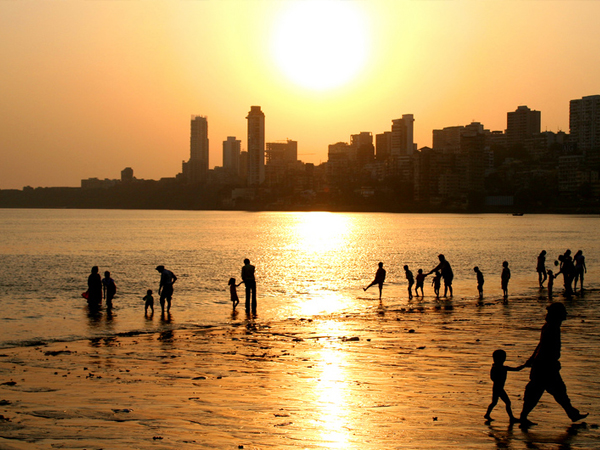If you have marveled over the intricate beauty of the idols of Goddess Durga during the Durga Puja festival in Kolkata, you have no doubt wondered how they are made. It is possible to see the idols being handcrafted. Where? Kumartuli Potter’s Town in north Kolkata.
The settlement of Kumartuli, meaning “potter locality” (Kumar = potter. Tuli = locality), is over 300 years old. It was formed by many potters who came to the area in search of a better livelihood. Nowadays, around 150 families live there, earning a living by sculpting Durga Puja Idols for various festivals.
In the lead-up to Durga Puja, thousands of artisans (many who are hired from other areas) toil diligently in about 550 workshops to complete the statues of Durga and her four children (Ganesh, Lakshmi, Kartikeya, and Saraswati) in time for the festival. What is pleasing to note is that the Durga Puja Idols are made out of environmentally friendly materials such as bamboo and clay. This differs from the idols of Lord Ganesh, which are predominantly made out of Plaster of Paris for the Ganesh Chaturthi festival, particularly in Mumbai.

Most of the clay is brought by boat down the Hooghly River from a nearby village. What is particularly interesting is the ritual tradition of obtaining soil from a brothel and mixing it with the clay. It is considered punya maati (blessed soil) collected from a nishiddho palli (forbidden territory). Apparently, according to one belief, when a man visits a brothel, he leaves his purity outside, and it settles into the soil there. Others say that the soil is used to respect the purity of the prostitutes’ souls, despite the profession they are engaged in.
However, this conflicts with the fact that sex workers are not permitted at some Durga Puja celebrations.
The artisans start by making a bamboo frame for the idol, called a kathamo. They bind straw over it to give it structure and then apply clay on top to give it its final shape. After drying the statue in the sun for a few days, they paint and decorate it. The drying process can be a problem because the work takes place during the monsoon season when the weather is damp.
Authentic classic Durga Puja Idols are decorated with darker saaj, a type of silver foil. These days, many idols are given a contemporary look, however. They are crafted by lesser-known artisans who are experimental. However, there are a few renowned names associated with traditional idols that inspire deep devotion. One such person was the late Ramesh Chandra Pal. His sons have taken over his work at Shilpa Kendra, the studio he established at 1 Kumartuli Street. The oldest idol maker, Samir Pal, is almost 75 and quite famous too.
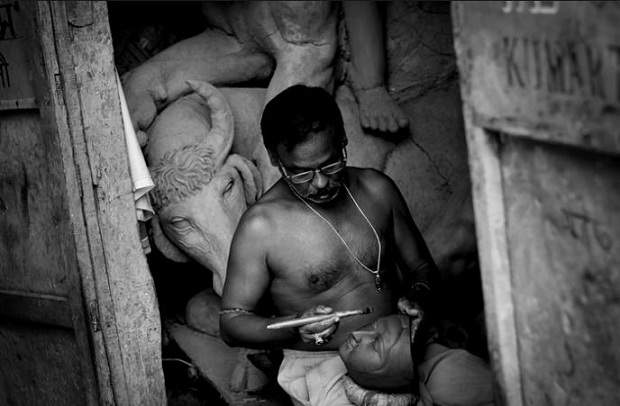
The statues are displayed on lavishly decorated public podiums all over Kolkata during the festival.
The artisans also make statues of fearsome Goddess Kali for Kali Puja (held about three weeks after Durga Puja during Diwali in October or November).
If you love art, you should not miss visiting Kumartuli. However, regardless, it is a place that offers a unique dose of culture. The narrow maze of lanes and alleyways teeming with humanity and gods and goddesses in various creation states. Wandering through them, and seeing the artists at work, reveals a fascinating world within a world right in front of you.
One thing to keep in mind, though, is that the area can be a bit dirty and unkempt — but do not let it put you off it! Kumartuli has become such a popular place for photography and photo walks these days, you are likely to encounter many other sightseers. You may also be required to purchase an entry ticket for a nominal fee. This helps support the artists.
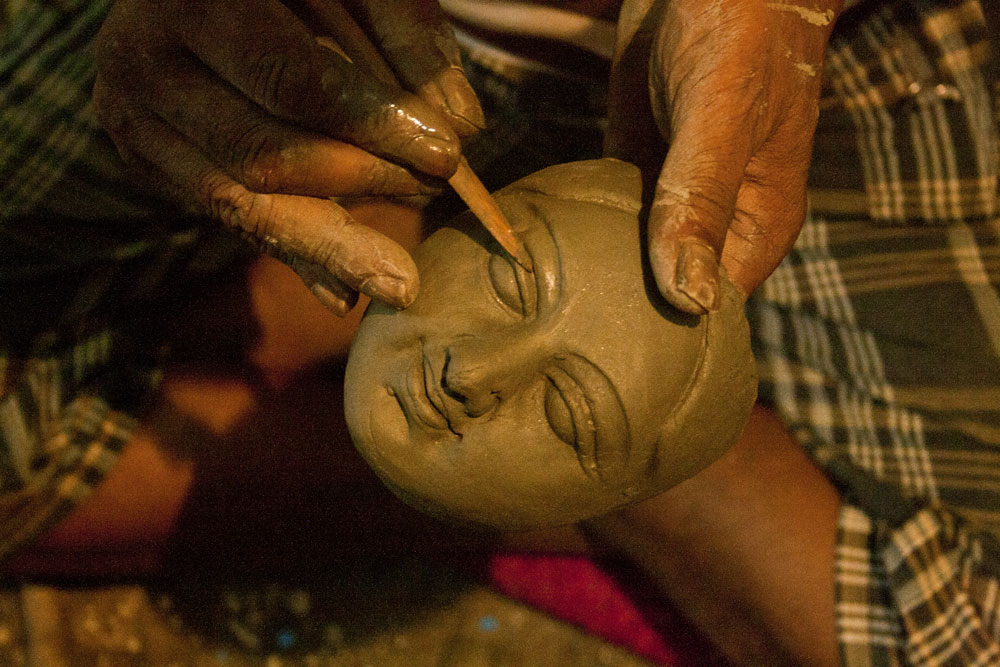
Where is Kumartuli?
North Kolkata, between Sovabazaar and the Hooghly River. The main location is Banamali Sarkar Street.
How to Get There
It is easiest to take a taxi (around 30 minutes from Park Street) to Kumartuli. Uber is available in Kolkata. Expect to pay about 200 rupees one way, although this is variable depending on demand and pricing.
Otherwise, buses, trams, and trains go to Kumartuli. The nearest railway station is the Sovabazaar Metro. Sovabazaar Launch Ghat (alongside the river) is also close by. Taking a walk to the riverbank is worthwhile, as you will get to see old Bengali mansions. From there, you can get a boat back to central Kolkata.
Taking the tram is an iconic way of getting to Kumartuli. Trams run along Rabindra Sarani from BBD Bagh to Bagh Bazaar.
Tours to Kumartuli
Prefer to go on a guided tour? Check out this special The Goddess Beckons tour conducted by Calcutta Photo Tours, and also this Bringing the Goddess to Earth walking tour by Calcutta Walks. Expect to pay 2,000 rupees per person for adults (minimum of two people required), excluding transport. Wandertrails also offers this four-hour Heritage Walk Through Kumartuli for 1,299 rupees per person (minimum of two people).
For an exceptional local experience, stay at Calcutta Bungalow. This artfully restored 1920s Bengali townhouse is a venture of Calcutta Walks. It is located less than 10 minutes from Kumartuli and is ideal for experiencing the Bengali heritage of North Kolkata.
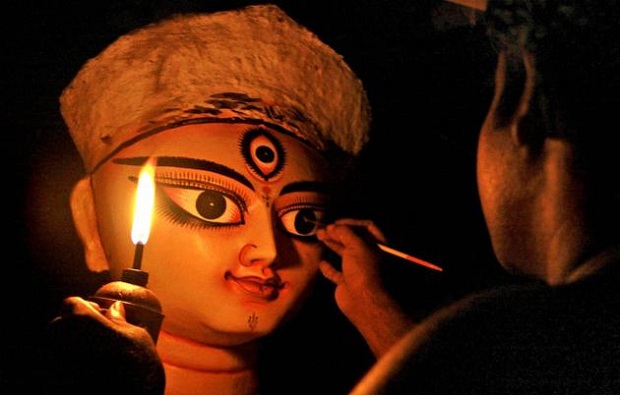
When is the Best Time to Visit?
Idol-making for various festivals happens mostly from June to January. Of course, the biggest occasion is Durga Puja. There is usually a frenzy of activity around 20 days before the Durga Puja festival begins to finish all the work.
Traditionally, the eyes of the Goddess are drawn on (in an auspicious ritual called Chokkhu Daan) on Mahalaya — usually around a week before Durga Puja starts. It is worth seeing. In 2020, it fell on September 17 — an unprecedented 35 days before the start of the festival. This is due to a rare astrological phenomenon known as mala mash, a lunar month with two new moons. It is regarded as inauspicious to perform religious rites and rituals during such a month.
An Annual Art Festival at Kumartuli
Rang Matir Panchali, a funky new festival celebrating the artisan’s work at Kumartuli, was held for the first time in April 2019 on World Art Day and Poila Boisakh (April 14 and 15). The festival featured installations, idol-making displays, paintings, photographs, wall graffiti, and street art. It is planned to be an annual event.
Visit Durga Puja for more information. Also, have a look at our various monthly issues.

